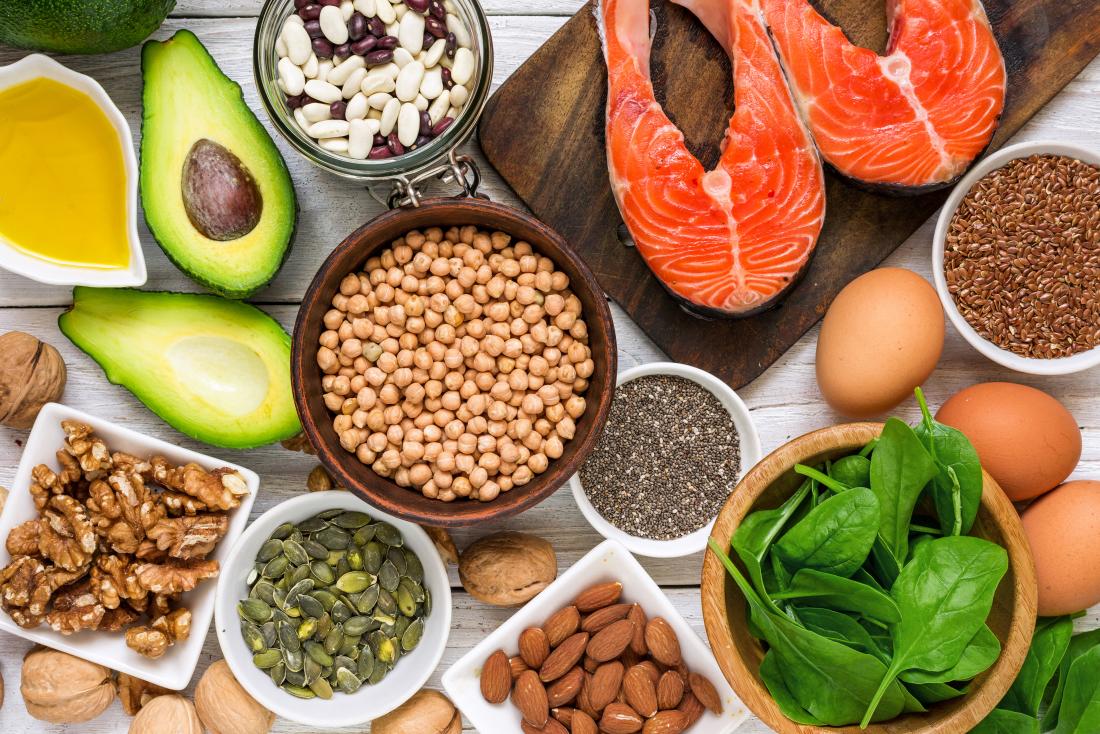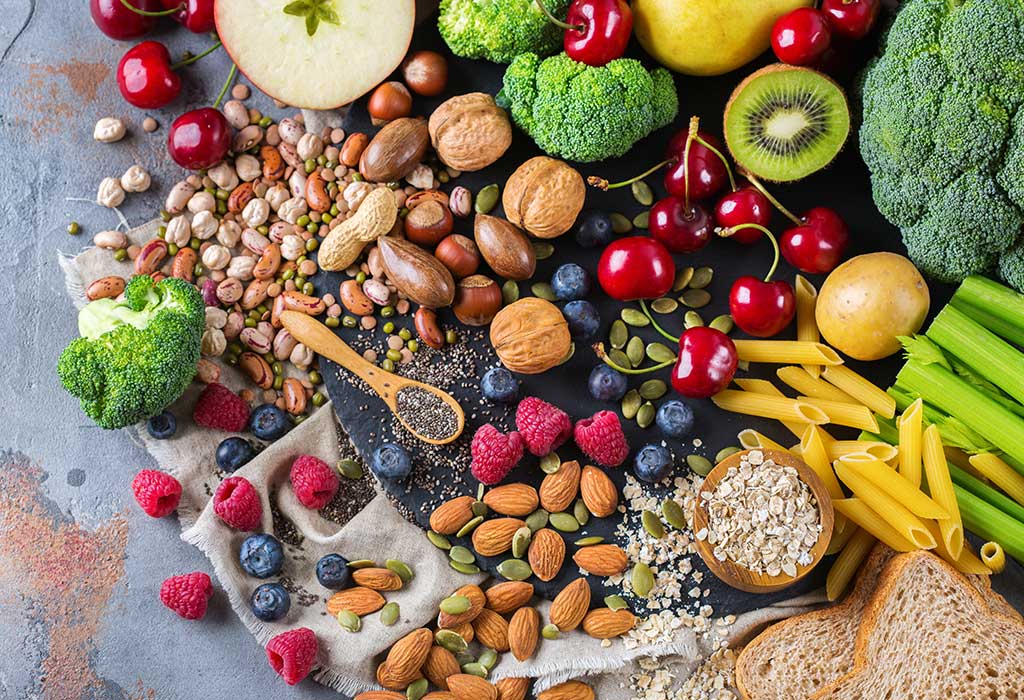Foods that can MAKE or BREAK your skin!
Our skin is one of the largest organs in our bodies. It is our body's main defense organ against external insults such as radiation, ultraviolet rays, pathogenic microorganisms (bad bacteria), and mechanical and chemical stress (1). The condition of the skin or the skin barrier is greatly supported by the foods that we eat, whether we like it or not. There are foods that can benefit your skin and foods that can harm your skin. The foods listed below can either make or break your skin!
Omega-3-rich foods
The term "good fat" usually refers to omega-3 fatty acids. It regulates skin oil production, improves hydration balance, controls breakouts, and reduces signs of ageing. Furthermore, when applied topically, it can help soften rough, dry skin and soothe irritation and dermatitis. Omega-3-rich foods can improve skin composition by balancing its inflammatory response to sun damage, as well as improve sensitive skin condition by making it less dehydrated and dry.

Fish is high in Omega 3 fatty acids. Specifically, fish oil. As a result, if an individual does not consume fish at all or prefers not to consume fish, it is recommended that they take Omega 3 and 6 supplements for their heart health. Omega-3-rich fish include mackerel, tuna, sardine and anchovies, salmon, and herring. Freshwater fish rich in omega 3 are also available in Malaysia, including catfish (ikan keli), patin fish, and terubok fish.
Aside from that, certain plant-based foods, such as spinach (bayam), mustard leaf (sawi), and 'salad roket,' contain high levels of omega 3. There are also omega-3-rich oils that can be used in cooking, such as canola oil. Also, if you want to improve the health of your skin, instead of snacking on chips or other unhealthy foods, try eating walnuts, which are high in omega 3.
Antioxidant and vitamin-rich foods
Plant-based foods, such as vegetables and fruits, are typically high in antioxidants and vitamins. Fruits and vegetables high in vitamins like C, E, and A are known as skin best friends.' All of these vitamins work in the same way when they engulf free radicals or reactive oxygen species (ROS). Free radicals can be produced naturally in the body, or as a result of UV radiation exposure, among other things. In other words, it is something that happens to everyone. As a result, it is critical to consume foods high in vitamins and antioxidants to combat all of the problems caused by free radical formation.
The Malaysian Ministry of Health recommends eating two servings of fruits and three servings of vegetables per day. The cupped hand size is used to determine vegetable serving size. As a result, 2 cupped hand size equals 2 servings. While the serving size for fruit varies depending on the type of fruit, 1 serving is equivalent to 1 fruit for medium-sized fruit such as apple, pear, and orange, while larger fruit is dependent on the normal cut sized. To simplify things, if you eat two apples, two pear, two bananas, or two oranges per day, you've already met the daily serving requirement.
Guava, orange, and lemon are examples of vitamin C-rich foods. Did you know that guava has twice the vitamin C content of an orange of the same size? Consuming 2 servings of guava or 1 small guava already meets your daily vitamin C requirement (75mg).

Almond, pumpkin, corn, collard, red bell pepper, and soy-based foods are examples of vitamin E-rich foods. According to research, Vitamin E or tocopherol works synergistically with Vitamin C to protect against UV radiation or sun damage.
Since most of the antioxidant- and vitamin-rich foods are mainly fruits and vegetables, it is essential to consume fruits and vegetables as suggested to have young looking skin!
Sugar
Sugar, as many people already know, is bad for your health because it raises your blood sugar level, which can lead to obesity, diabetes, heart disease, and other metabolic diseases. But it's also bad for your skin.
Sugar, in any form, has an impact on the two main causes of acne: hormones and inflammation. When you consume refined and processed carbohydrates, such as white sugar, your blood sugar levels rise faster, and your pancreas responds by releasing insulin. By avoiding sugar, you may be able to reduce the amount of insulin your body produces, which will reduce the oil and acne production.
Desserts such as cakes, tarts, cookies, 'traditional' kuih, and bakery products are high in sugar. Our daily staple foods are also high in refined carbohydrates or refined sugar. White rice, white bread, noodles, and flour-rich foods are all high in refined carbohydrates, which can harm the skin condition in the long run.
In conclusion, eating a healthy and well-balanced diet is the best way to achieve younger-looking skin. Consuming a lot of fresh products, limiting processed foods, oily foods containing trans fat, and sugary foods will help you not only have younger looking skin but also a healthier body!
References
- Cleveland Clinic. 23 Foods that are good to your skin. https://health.clevelandclinic.org/23-foods-good-skin/ (Accessed on January 8, 2020).
- Food fix: Healthier skin. https://www.healthline.com/health/beauty-skin-care/skin-diet#Food-Fix:-Foods-for-Healthier-Skin (Accessed on January 8, 2020).
- Dattola, A., Silvestri, M., Bennardo, L., Passante, M., Scali, E., Patruno, C., & Nisticò, S. P. (2020). Role of Vitamins in Skin Health: A Systematic Review. Current Nutrition Reports, 1-10.
- Schagen, S. K., Zampeli, V. A., Makrantonaki, E., & Zouboulis, C. C. (2012). Discovering the link between nutrition and skin aging. Dermato-endocrinology, 4(3), 298-307.
- Cao, C., Xiao, Z., Wu, Y., & Ge, C. (2020). Diet and Skin Aging—From the Perspective of Food Nutrition. Nutrients, 12(3), 870.
- Siong, T. E., ASEAN, K. L. M., Noor, M. I., Azudin, M. N., & Idris, K. (1988). Nutrient composition of Malaysian foods.




